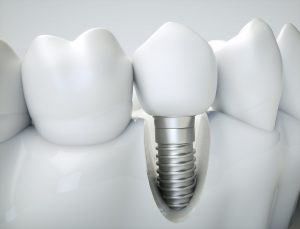
When placed by an experienced dentist, dental implants have an incredibly high success rate. However, on rare occasions, implants can fail. Is your dental implant feeling a bit wobbly or loose? If your dental implant has failed, your dentist may need to remove it in order to preserve your oral health. Keep reading to learn about what you can expect when removing a failed implant in West Orange.
What Causes Implant Failure?
Dental implants can fail for a number of different reasons, such as:
- Weak jawbone – Implants are more likely to fail if they are placed in a thin or weakened area of the jawbone.
- Smoking tobacco – Research shows that as many as 1 in 5 smokers experience dental implant failure.
- Poor oral hygiene – Perio-implantitis, an infectious disease that can develop around implants, can cause bone loss and contribute to implant failure. Practicing excellent oral hygiene is critical to preventing perio-implantitis and other oral infections.
- Medical conditions – Osteoporosis, a condition that attacks bone strength and density, can make it difficult for a dental implant to anchor to the bone.
How Does the Implant Removal Process Work?
When removing a failed implant, your dentist will aim to preserve as much healthy bone as possible. They may use a special tool called a trough bur to cut a small portion of your bone (0.5 – 1.0 mm) along the implant edge. Once the implant has been slightly separated from the bone, your dentist will carefully loosen and remove it.
Is Dental Implant Removal Painful?
No! Removing a failed dental implant is typically a pain-free procedure. You will likely be under local anesthesia and dental sedation while your dentist works on removing your failed implant. This will ensure you are comfortable throughout the oral surgery.
After the Implant Removal
Your dentist will give you personalized instructions to deal with any swelling or soreness, which is a normal result of oral surgery. You can manage any lingering discomfort by taking prescription or over-the-counter pain medication as directed by your dentist. If your implant failed due to an oral infection, your dentist will likely prescribe antibiotics for you to take. In addition, you should stick to a soft-food diet for the first few days after the implant removal surgery.
Placement of a New Dental Implant
In some rare cases, it is possible to place a new dental implant immediately after removing an old one. This may be an option for you if you have sufficient jawbone density and the area around the implant site is free from gum disease and other oral infections. Most patients, however, must wait between four to six months after removal before they can receive a new dental implant in West Orange. If you have experienced bone loss in your jaw, your dentist may recommend undergoing a bone graft procedure to strengthen the area before getting a new implant.
While a failed dental implant can be disappointing, it’s no reason to despair! By partnering with an experienced implant dentist, you can soon reclaim a complete, healthy smile.
About the Author
The proud owner of D&G Dental, Dr. Med Dawoud helps rebuild smiles in Essex County, NJ with high-quality dental implants. Dr. Dawoud has a Fellowship with the prestigious International Congress of Oral Implantologists (ICOI) and is skilled at removing failed dental implants. To learn more about what to expect when removing a failed implant in West Orange, visit the D&G Dental website or call 973-731-2200.
